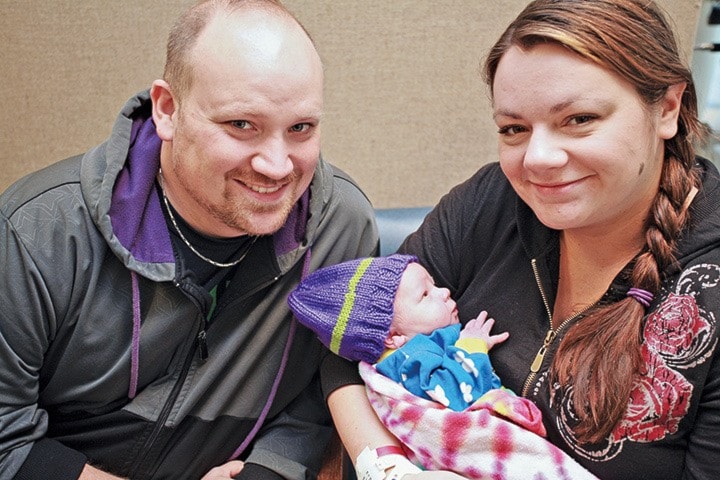A baby’s incessant wailing – call it purple crying or colic – can drive the sanest parent to the brink.
New mom Natasha Crawford happily watched a DVD on purple crying during a pre-natal class.
“It was good and helped prepare me for what to expect,” she said, snuggling her three-day old son Anson.
The DVD is something all new parents get at Victoria General Hospital. This month there’s a toque to serve as a safety reminder as part of the Purple Crying campaign. The goal is to remind parents that it’s safer to leave a crying baby in a safe place and walk away for a few minutes than to lose your cool and shake him or her out of frustration.
“With my daughter there were a few nights here and there when we needed to keep out patience, but then you get over it,” said Tim Bendall, who welcomed his son Lincon into the world on Nov. 3. Getting reminders is always a good thing, the second-time dad said.
Volunteers from across the province put knitting needles to the grindstone stitching toques for hospitals across B.C. – 160 knit caps came to Victoria General.
Charlotte El-Agav, a program co-ordinator at the Ministry of Health, was among the knitters. She knows first hand how tough it is to deal with a wailing baby.
“I was in tears, sobbing my head off. I didn’t know if I was doing something wrong,” she said, harkening back to when her 38-year-old daughter was an infant. “Every child goes through it, it’s not abnormal.”
Unfortunately neither is shaken baby syndrom. VGH pediatrician Roxana Bolaria has seen two cases in her 11 years at this hospital.
“One shaken baby is one too many,” Bolaria said. “Babies can die (or) have neurological damage, it’s a brain injury. Their heads are relatively large and their neck is small. From being shaken, they can die, have seizures (or) they may not be able to walk or talk or feed themselves.”
Bolaria said two of her three children were “difficult babies.”
“Even as a pediatrician with lots of knowledge – and I had lots of family support – it was hard,” she said. “It’s important for us to understand what is normal crying and the developmental stage. You can change them and feed them and if you still can’t comfort them put them down and walk away.”
